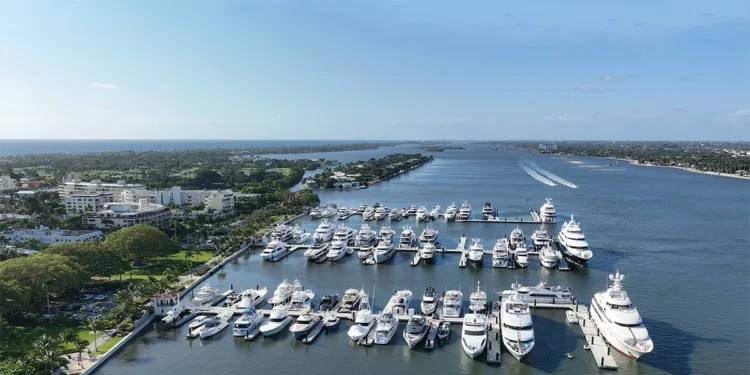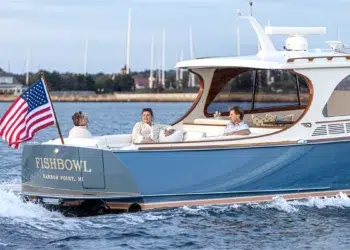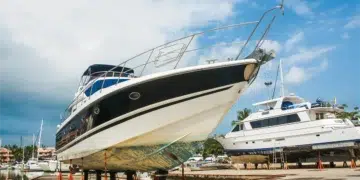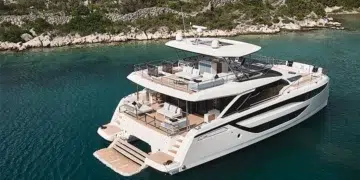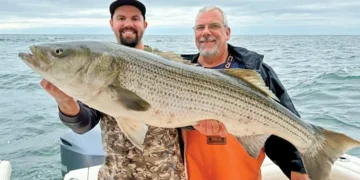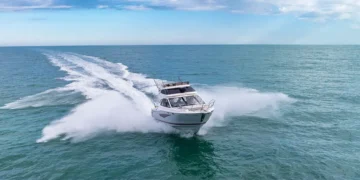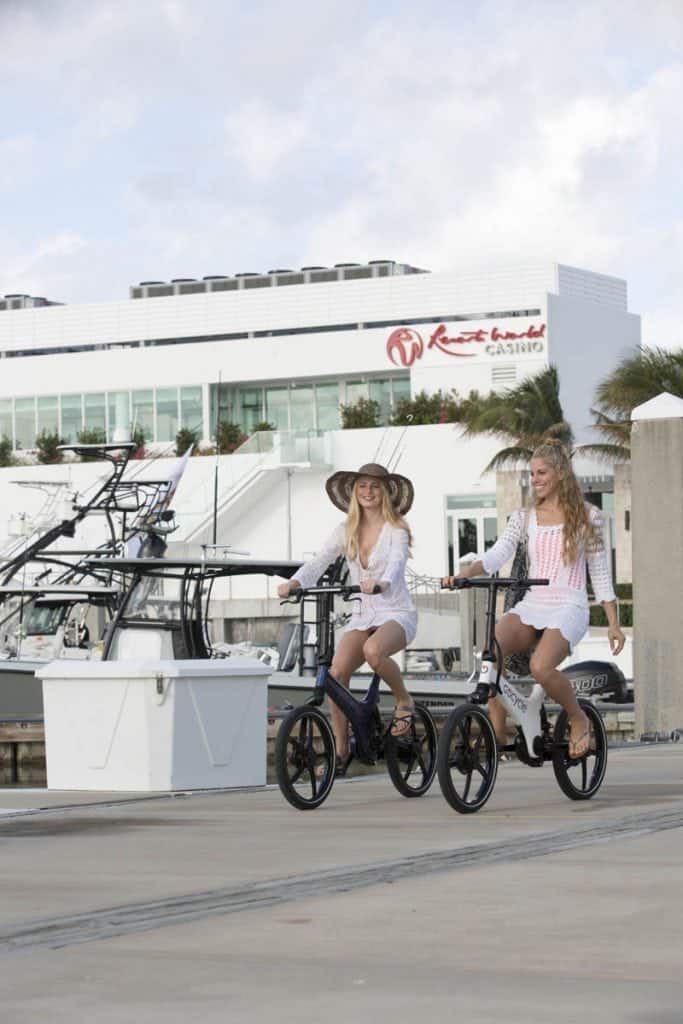Record boat sales have put a crunch on available dock space.
The COVID pandemic was devastating to so many across the globe, but it did bring awareness of the benefits of enjoying life while you have it, including the advantages of being outdoors. It was an extraordinarily bizarre time, but in an odd twist, it was a significant time for the recreational marine industry as boating became a way to escape the frustrations of being cooped up indoors and take those deep breaths of fresh air.
Boat sales soared, and there were more people out on the water than in years prior. In turn, dock space became a premium commodity. So much so, that marinas have had 100 percent capacity ever since. It’s why many marinas are redesigning their dock space to accommodate larger vessels and relieve the growing numbers adding to waiting lists. Some cities and towns as well as resort properties are adding or renovating marinas due to those numbers primarily because they realize the value of catering to that clientele. As a result, benefits and services are improving, but at what cost?
Also Read
Sport Express Cruiser Buyers’ Guide: 22 Standout Boats Going Into 2026
Performance and power come together in 22 versatile vessels. Quick Facts Coverage: 22 sport express cruisers across cats, CCs, jets,...
The Impact
Marina development is now big business. Marinas are being bought before any go up for sale, and mom-and-pop operations are few and far between these days. Developers and venture capitalists recognize the potential of the increased demand for dock space which makes property values soar. Large companies, such as Safe Harbor, have been buying up marina properties due to changes in tax laws regarding dock rentals as real estate income and as a way to increase investment portfolios. On that line, Safe Harbor was recently bought by Sun Communities in a quest to increase their investment portfolio. As a note, it was smart for Sun to keep the Safe Harbor team on board due to their expertise in marina management.
One of the foreseeable problems with consolidation is the risk of boat owners losing public dock space and, perhaps, higher fees, or even worse, the loss of the marina altogether in exchange for a higher income producer such as a condominium. But most see the value of engaging the boating community and develop the land to coincide with the boating lifestyle with resort amenities and accommodations for both mariners and landlubbers.
So, where do you put your boat? If you trailer yours, then okay, but do you have space to store it? Many home owner associations or city ordinances won’t allow parking your trailer on the street or in the driveway or beside the house (as was in my case). If you own a waterfront home and have a dock, then you’re set. There is the option to find homeowners who aren’t using their docks, but otherwise, it’s been quite a dilemma, so marinas and investors in waterfront property are being creative in their solutions.
Subscribe Here For More Boating Content
Boat Storage Option: Dry Stacks
A not-so-new idea that is becoming a technological marvel is that of dry stack boat storage. Imagine a large building with a huge rack system, shelves, if you will, from floor to ceiling; boats are stored in their own cradle. Some facilities are able to handle up to 250 boats in one building.
Although many are still retrieved by marine forklifts, which require more “real estate” to move the boats around, newer stacks are fully automated with computerized crane technology. The Port Marina in Fort Lauderdale is one of the nation’s first automated dry stack marinas. The touch of a button will send a laser-guided overhead crane to pick up a boat from the rack and safely launch it in the building’s interior in-water slip which leads out into the canal. The system accommodates a wide range of hull types, including boats not commonly found on racks, such as those with IPS drives and catamarans up to 52 feet in length.

Just down the same canal is F3 Marina, which operates the world’s largest overhead crane being used in marina storage. It only takes about five minutes to store or retrieve a boat up to 46 feet in length. F3 operates marinas throughout the U.S. from Florida to Maine to the Great Lakes and California.
Port 32 has a portfolio of 10 marinas located throughout Florida, and its recently renovated Fort Lauderdale center also offers fuel and an in-water repair facility for yachts to 150 feet. The dry stack is designed to withstand wind speeds up to 175 mph.
In New York, Sunset Harbour in East Patchogue on Long Island has 332 wet slips in the marina and created more with the addition of indoor and outdoor dry stack storage.
Upping the Game
As mentioned, many marinas and resorts are revitalizing their properties to accommodate more and larger vessels as well as adding services and benefits to keep boats in their docks.
InterMarine has four locations in South Florida with its headquarters in Fort Lauderdale. It recently announced a $3 million project to update the Fort Lauderdale location with plans to rebuild the marina with state-of-the-art floating docks, a new seawall with Travelift ramp and two pads for forklifts, and increase the dry storage space with the use of storage racks. In addition, it is expanding its showroom for new boats as well as the service center.
The Las Olas Marina, located on the Intracoastal Waterway and included in the Fort Lauderdale International Boat Show, is being improved by Suntex Marinas to add more dock space with some able to accommodate yachts to 250 feet. The marina plans to open in time for the 2024 boat show and will include fine-dining restaurants and boutique retail shops, not to mention being only one block from the ocean and the multi-block lineup of beachfront bars, restaurants, and shops.
Also Read:
Hinckley’s Picnic Boat 39 Review: Quiet Speed, Big Views
Imagine a beautiful day. Visualize a traditional wicker basket filled with tasty delicacies, a cooler with refreshments on...
The Town of Palm Beach Marina completed a $40 million transformation that took the Old Town docks and created a cutting-edge global yachting center that can accommodate yachts to 295 feet, yet, as with most of the marinas, the waiting lists continue to grow.
In South Carolina, Safe Harbor Charleston City has redeveloped the marina and slip layout adding 6,000 feet of dockage, including the 2,234-foot MEGADOCK, one of the largest fuel docks in the world. Safe Harbor has marinas across the country with nine locations under redevelopment.
Situated on the Delaware River, just north of the Tacony-Palmyra Bridge in Philadelphia, the One River Marina project has plans to revitalize the waterfront with more than 200 boat slips and dry rack storage. Besides a boon to the entire community, the marina will provide extra dockage for the area. The development will be in phases with the bulkhead, docks, and boat storage going in by Spring 2026, when the U.S. celebrates its 250th anniversary.

In the Great Lakes, Adelaide Point on Muskegon Lake just inside the entrance to Lake Michigan in Muskegon, Michigan, has a development plan to create residences amid a public park with events, dining options, and a 160-slip marina. The marina will also have a dry stack building for storage of 277 vessels up to 40 feet. With the many boatbuilders that call the Great Lakes home, additional marinas such as Adelaide Point are a welcome sight.
Recreational boating is a global pastime that remains vibrant and enjoyed by millions. Boatbuilders continue to create new models with innovative technology that entice more people to take the step into owning a boat. Although the used boat market is softening, new boat sales have seen an increase in 2024.
No matter how you look at it, there are a lot of boats that need a place to dock when not in use. Apps such as Dockshare, Dockwa, Snag-A-Slip, Dock Skipper, and PierShare can help. If you’re having trouble finding dock space, don’t give up. There’s probably one just around the bend.
-by Steve Davis


